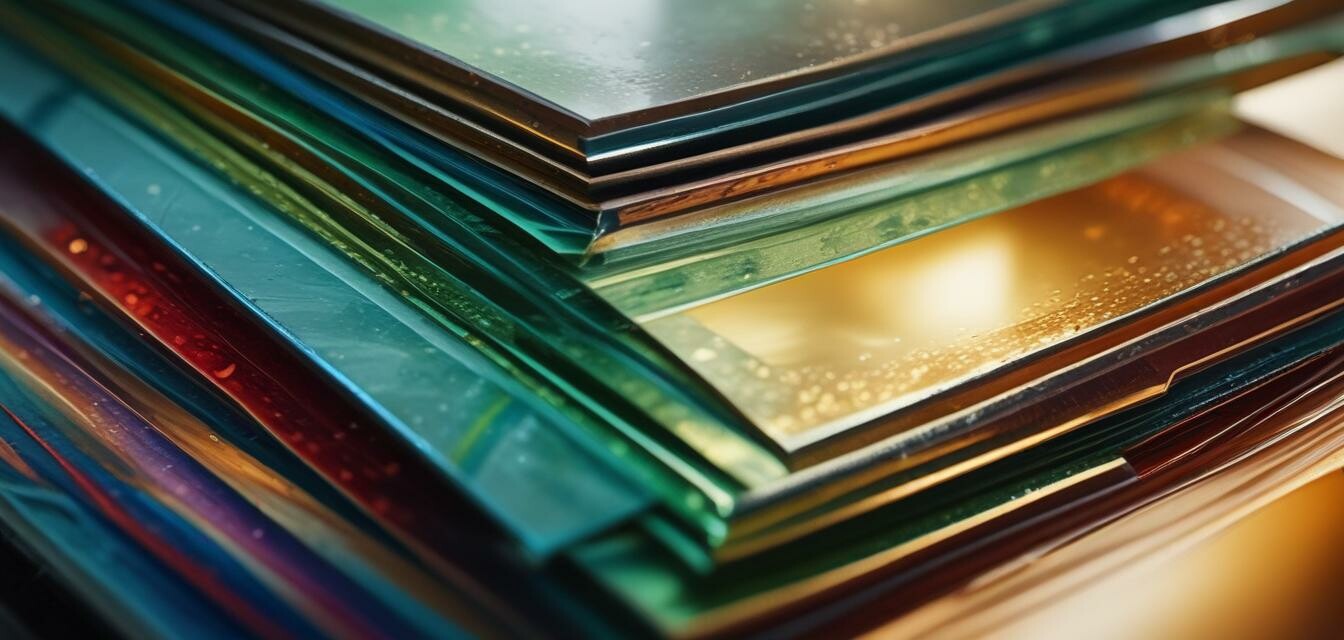
Exploring textured glass sheets: Techniques and tips
Key Takeaways
- Textured glass sheets add depth and visual interest to glass art projects.
- Different types of textured glass sheets can be used for specific effects.
- Techniques such as glass fusing and slumping can enhance the beauty of textured glass.
- Choosing the right tools and supplies can simplify the crafting process.
- Textured glass can be used in both functional and decorative art pieces.
Delve into the fascinating world of textured glass sheets, where creativity meets craftsmanship. Textured glass sheets provide endless opportunities for glass artists to explore and experiment. In this article, we’ll cover the different types of textured glass sheets, techniques for using them in your projects, and helpful tips for achieving stunning results.
What are textured glass sheets?
Textured glass sheets are specially designed glass pieces featuring various surface patterns. These patterns can range from ripples, waves, and bubbles to more intricate designs, making them a versatile choice for many projects. Textured glass not only serves an aesthetic purpose but also plays a functional role in privacy and light diffusion, making it a popular option for both art and everyday use.
Types of textured glass sheets
When selecting textured glass sheets, it's essential to consider the specific types available and how they can impact your creations. Below are some popular types:
| Type | Description | Common Uses |
|---|---|---|
| Rippled glass | Features wavy patterns that mimic the appearance of water. | Table tops, decorative panels, and bathroom windows. |
| Frosted glass | Provides a sandblasted or acid-etched finish, offering a soft, translucent look. | Privacy screens, light fixtures, and decorative elements. |
| Seeded glass | Incorporates tiny bubbles within the glass for an organic texture. | Light fixtures, doors, and windows. |
| Stria glass | Displays parallel lines or grooves, providing a contemporary feel. | Partitions, wall art, and decorative glass pieces. |
Techniques to use textured glass sheets
Utilizing textured glass sheets in your projects involves various techniques that will help you achieve the desired effects:
1. Glass fusing
Glass fusing involves heating different sheets of glass until they melt together. Textured glass can create stunning visual layers when fused. Start by layering your textured sheets with clear glass to amplify the depth.
2. Slumping
Slumping is a technique where heated glass is shaped over a mold. Textured sheets can enhance the final look of the piece, creating unique shapes with intricate patterns.
3. Incorporating textures in mixed media
Textured glass can be incorporated into mixed media projects. Pair it with wood, metal, or other materials to create interesting contrasts and enhance the overall composition.
Tips for working with textured glass sheets
Beginners Section
- Start with small projects: Begin with simple designs before tackling more complex ones.
- Use the right tools: Invest in quality cutting tools to ensure clean edges when working with glass sheets.
- Experiment: Don't be afraid to try different combinations of textures and colors to find what works best.
- Practice safety: Always wear safety goggles and gloves when cutting or heating glass.
- Explore different techniques: Whether fusing or slumping, be open to learning various methods to expand your skill set.
Choosing the right supplies
To get started with textured glass, consider the following categories of supplies:
- Fusing and slumping supplies
- Glass art project kits
- Glass molds
- Glass sheets and essential supplies
- Kiln accessories and tools
Conclusion
Textured glass sheets offer endless possibilities for creating mesmerizing glass art. By understanding the different types and techniques, you can elevate your projects to new heights. Whether you are a beginner or an experienced artist, textured glass adds a unique flair to your work that is sure to leave a lasting impression.

